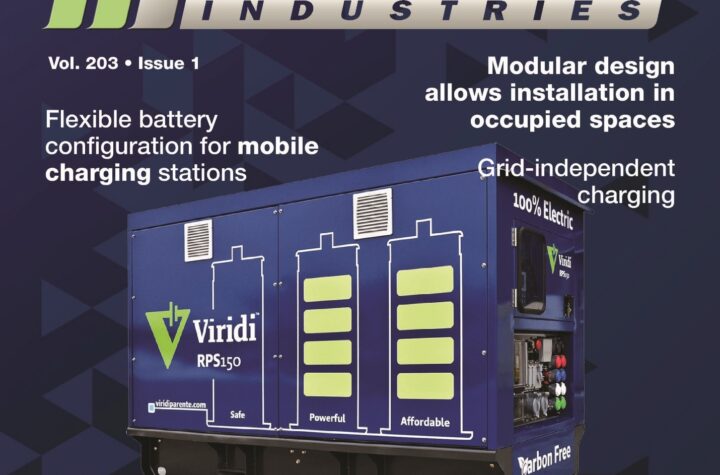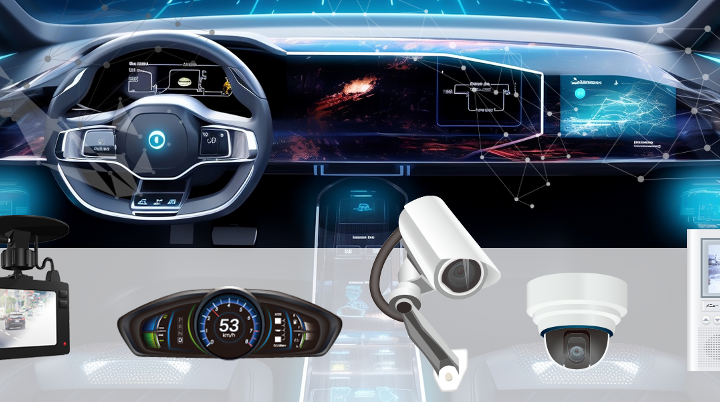
Navigating Electrification, Software-Defined Vehicles, and Collaborative Innovation in a World of 'Smartphones on Wheels'
Automotive Industries interview with Andreas Heim, VP of Engineering, Automotive, Flex and Nicole Stevenson, VP Strategy & Marketing at Flex
The automotive industry is undergoing a revolutionary transformation with the advent of rapid technological advancements in electrification and software-defined vehicles. In an exclusive interview with Automotive Industries, Nicole Stevenson, VP Strategy & Marketing, and Andreas Heim, Vice President of Engineering, Automotive, both from Flex, shed light on the impact of these changes on traditional business models and how the industry is adapting to meet evolving consumer demands. Visit Flex.com/automotive to learn more about how Flex is advancing the next generation of mobility.
Automotive Industries: Hi Nicole, in the context of the automotive industry, how do rapid technological advancements in electrification and software-defined vehicles impact the traditional business models of automakers?
Nicole: I think the analogy of cars transforming into “smartphones on wheels” is a perfect way to illustrate how software-defined vehicles are becoming the most powerful computers that consumers interact with on a daily basis. This massive technology transformation in cars incited Automakers to become mobility companies delivering technology, software, and content, while creating their own intellectual property to differentiate products and services and meet consumer demands. This is a huge change from traditional auto OEM thinking. In order to do this faster to compete with new entrants, Automakers must reconfigure older business models, and take a page from the tech industry playbook by working closely with new partners to develop and scale complete mobility solutions. By accelerating the openness of the ecosystem, automakers can move faster and focus their investments on unique, brand-defining customer experiences. We call it “co-opetition” where automakers begin collaborating on non-differentiating features. For example, OEMs can optimize engineering resources to share non-differentiating features such as middleware platforms and focus their resources on differentiating features such as OTA software and AI software frameworks. Essentially, expanding their software and systems integration capabilities and creating their own intellectual property that differentiates their products and services. This can offer greater reliability, resilience, and speed with seamless systems integration. This new ecosystem is an evolution from the historic structure of the industry where OEM’s sat at the top of the pyramid, with full service Tier 1 suppliers designing and manufacturing components, including the SW and HW. Now it’s more of a hub-and-spoke model where partners must include semiconductor companies, software innovators, tech startups, and design and manufacturing partners. OEM’s leveraging each partner where needed. This is exactly the approach we take at Flex; we partner with the entire automotive ecosystem, including key global semiconductor partners.
Automotive Industries: Hi Andreas, according to McKinsey & Company, the automotive software market is projected to more than double in size from $31 billion in 2018 to $80 billion in 2030. How are software-defined vehicles, with centralized architectures and scalable computing solutions, contributing to this growth and enabling automakers to deliver differentiated experiences?
Andreas: At its core, a software-based approach offers a simpler vehicle architecture with greater flexibility and opportunity for customization. Legacy vehicles with hundreds of discrete ECUs have limitations in computing power and require significant wiring infrastructure in areas where space is often severely limited. Software-defined vehicles, on the other hand, utilize centralized vehicle architectures with fewer, but more powerful scalable computing solutions. While the architecture and system design may become more intricate as a result, we have made thorough preparations to effectively navigate these complexities. Overall we enable faster, updatable, and more fully-featured software while greatly reducing vehicle wiring and overall system component counts. Nicole mentioned the analogy of the car as a smartphone on wheels. As software-defined vehicles become the norm, we can point to new opportunities for OEMs that will only grow over time. For example, OEMs can deliver differentiated and customizable experiences for consumers to build affinity, preference and long-term brand loyalty. OTA updates will help consumers avoid time consuming trips to the dealership for repairs that previously required dealer support. And new digital features, updates and content can be sent directly to the vehicle to ensure ongoing user engagement and novelty. This is a factor highlighted by Boston Consulting Group, who report that customers tend to stick with brands once they adopt digital services and customized software. The Boston Consulting Group predicts that revenue from software-defined vehicle services is set to rise to $248 billion by 2030.
Automotive Industries: The ongoing semiconductor shortages have posed challenges to the automotive sector. How can collaboration between automakers and semiconductor partners help in securing semiconductor supply and accelerating innovation cycles in the industry?
Nicole: Well, we all know next-generation mobility can only be achieved if we have the chips and hardware to support it. In order to help secure the supply chain and enable innovation, the automotive industry must engage and collaborate directly with the semiconductor suppliers and involve them early in the product development process. To unlock the maximum potential of software-defined vehicles, we must strike a balance between enhancing their computing capabilities while providing a buffer for their inevitable growth. These computers must balance cost-effectiveness, as well as power usage and weight to optimize energy efficiency. Looking ahead, this could one day include the prospect of upgradeable computing hardware. All of this requires closer partnerships with semiconductor companies to develop the right solutions while avoiding potentially high-priced chips that are not optimized for purpose. AutoForecast Solutions estimates that almost 18 million vehicles have been removed from production plans since the chip shortage began. On one hand, the automotive industry must avoid a crisis like this in the future. And on the other hand, we must prepare for a tremendous increase in demand driven by the shift to software-defined vehicles, with the underlying automotive ECU market forecasted to grow to approximately $150 billion by 2028. The collision of these two factors underscores the need to expand automotive semiconductor capacity. And this takes an investment plan which requires support of the full ecosystem. The good news is that we’re seeing semiconductor companies place increased emphasis on the automotive industry. According to the KPMG global semiconductor industry outlook for 2024, semiconductor leaders named the automotive sector as the most important application driving semiconductor company revenue.
Automotive Industries: The need for expanding automotive semiconductor capacity is emphasized. What specific steps can the semiconductor industry take to invest in automotive capacity, and how does this investment address the current challenges faced by automakers?
Nicole: The automotive supply chain has faced massive challenges since the onset of the chip shortage. Losses caused by the shortage exposed how critical a reliable supply of semiconductors is to the entire value-chain. It also underscored how fragile each piece in the chain really is. We’re now seeing that automakers have started to think and plan differently. Some OEMs and even larger Tier 1s signed contracts directly with semiconductor suppliers to lock in supply. Many companies have also started to move away from the Just-in-time manufacturing model that left so many without buffer stock. Automakers are also leveraging advanced technology to mitigate risk and build resilience. With the rapid shift to software-defined vehicles and EVs, the mobility industry has begun applying Industry 4.0 manufacturing best practices from high-tech industries, including AI and integrated data processing tools, to make better predictions about manufacturing and supply chain needs. As a result, improvements to the overall system can extend cross-industry supply chains and have become more intertwined. One example at Flex is our Joint Risk Management application, which we use to collaborate with customers to assess and mitigate supply chain risk in the early phases of the product lifecycle. Leveraging artificial intelligence and machine learning (AI/ML)-driven analytics, Joint Risk Management helps customers assess risks and mitigation options for greater supply chain resiliency.
Automotive Industries: With the rise of autonomous vehicles, there’s a growing emphasis on sensor technologies. How is Flex contributing to the development and integration of advanced sensor technologies in vehicles, and what impact do you foresee these technologies having on the future of mobility?
Andreas: The vision sensing technologies needed to enable a future of increased mobility and an aspiration toward zero accidents requires multiple modality of sensors, with increasing complexity. This is where Flex steps in: We can provide productization at scale including manufacturing, opto-mechanical testing / calibration, and all the required Automotive DFx + quality processes. Flex is partnering with Smartmicro specifically to address sensor technology for the software-defined vehicle. In this case, we co-develop a full portfolio of advanced radar sensors for L2+ applications. Our latest generation corner radar solution uses a platform approach to minimize NRE and BOM costs, and covers a wide range of ADAS applications with multi-mode (10m to 200m) and multi-band capabilities. We also extend our combined knowledge into long range imaging radar solutions.





More Stories
Driving Energy Innovation, an Automotive Industries interview with Jon M. Williams, CEO of Viridi
Interface ICs for High-Resolution Video
Enabling High-Voltage Energy Systems with Safe and Efficient SiC Power Transistors